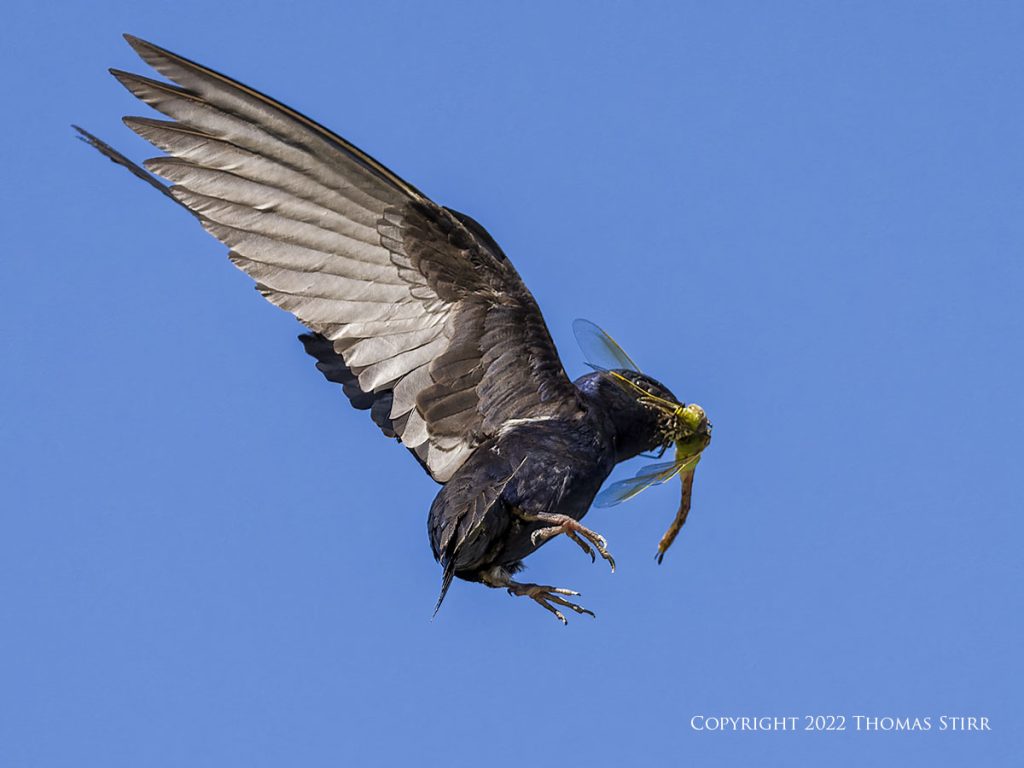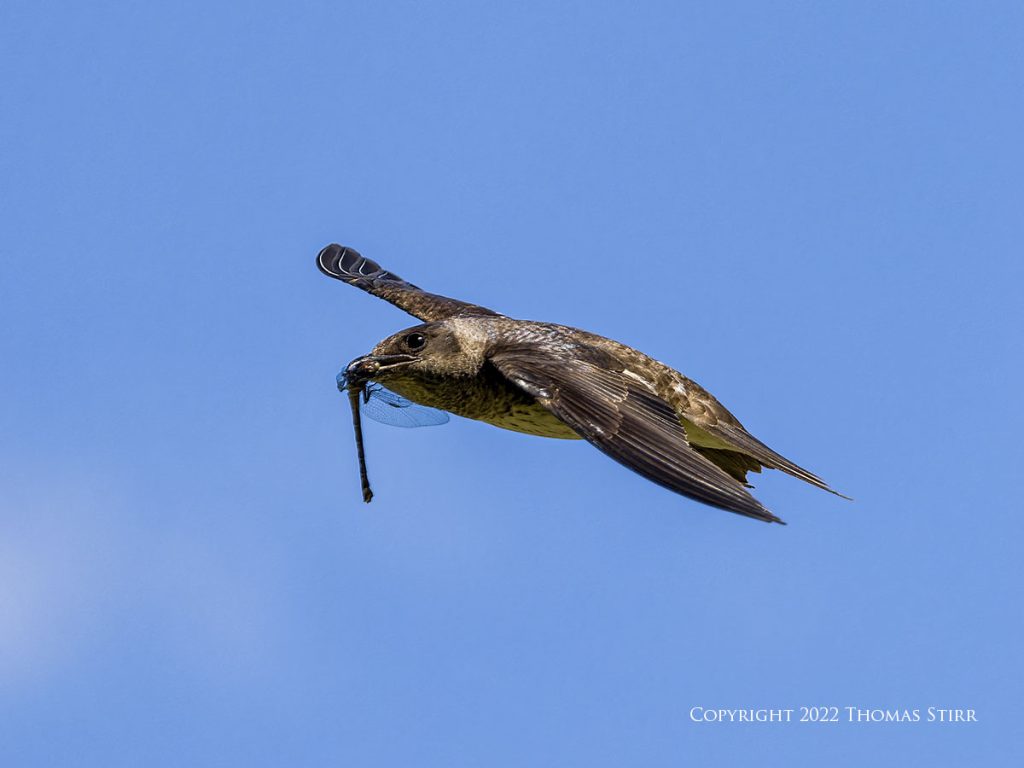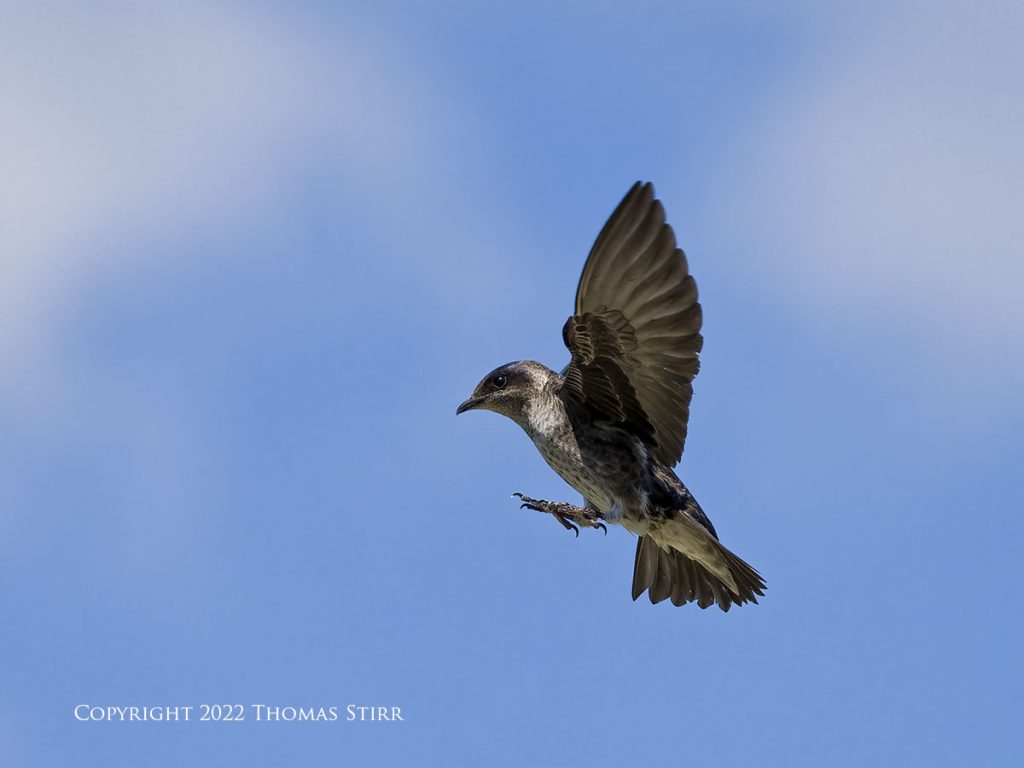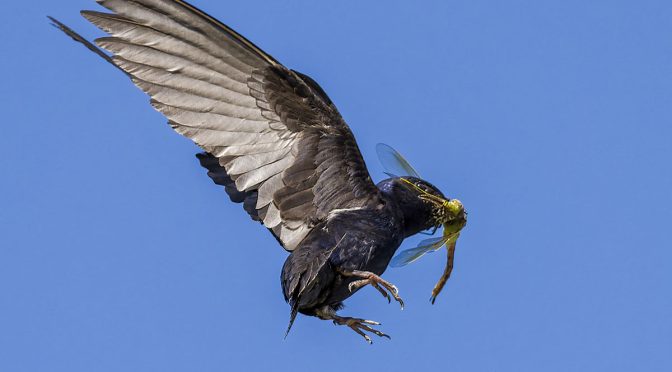This article features a collection of new images of purple martins using Bird AI Subject Tracking and Pro Capture L. All photographs were captured handheld during a recent visit to Ruthven Park in Cayuga Ontario.
NOTE: Click on images to enlarge.

This was the first time in about 3 years that I had an opportunity to photograph purple martins in flight at Ruthven Park due to COVID-19 issues.

This was also the first time that I had the chance to use my E-M1X’s Bird Detection AI Subject Tracking with this subject matter at Ruthven Park. Upon arrival at the park I decided that I would shoot using my C3 Custom Mode which incorporates Bird Detection AI Subject Tracking in combination with Pro Capture L.

I knew from my previous experience photographing purple martins in flight at this location that I would be more successful backing off my zoom lens and using somewhat shorter focal lengths.

There are a number of polls erected at Ruthven Park that have clusters of nesting boxes attached to them. All are in close proximity. This physical set-up is such that the purple martins in-flight tend to approach from a range of different angles and heights.

Purple martins are the largest member of the swallow family in North America. Like other swallows they are fast flyers with somewhat erratic flying patterns. Using a shorter telephoto length makes it easier to locate incoming birds in one’s viewfinder.

Photographing purple martins using Bird AI Subject Detection made things exponentially easier. I could focus more of my efforts locating the incoming birds and keeping them framed decently in my compositions. I spent far less time worrying about acquiring focus on them as I could rely on the Bird AI Subject Tracking technology to help accomplish that for me.

While I did capture a number of images with the purple martins approaching in a left to right movement, most of my photographs were from the opposite direction. This was primarily due to the position of the sun and the fact that a higher percentage of birds were flying in from my right side.

Trying to avoid visual clutter, I predominantly chose purple martins that were in full flight and not that close to the nesting boxes.

Most of the subject birds were females in-flight, but I did manage to capture a few of the males.

Like other members of the swallow family, purple martins usually capture their prey when in full flight. Based on my collection of Ruthven photographs the most common prey were dragonflies and grasshoppers.

I also noticed some purple martins with bees, butterflies and some undetermined insects in their beaks.





My shutter speeds ranged from 1/1600 to 1/4000 with most of my photographs being at faster speeds to help freeze wing movements.

If you check the EXIF data on the images in this article you’ll see that the distance to subject in the majority of them were in the 8-13 metre range. I like to photograph smaller birds-in-flight at relatively short subject distances whenever possible.

Regardless of the camera gear that you may own, it pays dividends to continually practice eye/hand coordination when photographing birds-in-flight. The smaller and faster the subject birds are… the more beneficial practice becomes.

Photographing purple martins using Bird AI Subject Tracking also highlights the potential importance of technology and its impact on our results. I spent a couple of hours photographing purple martins in flight at Ruthven Park, and ended up deleting well over 1,000 useable images. I simply didn’t have the time or the hard drive space to process them.

Technical Note:
Photographs were captured handheld using camera gear as noted in the EXIF data. All Pro Capture L photographs were captured using my standard settings for this mode: 18 frames-per-second, single AF point, Pre-Shutter Frames set to 10 and Frame Limited turned off. Images were produced from RAW files using my standard approach in post. Images were resized for web use. This is the 1,194 article published on this website since its original inception in 2015.
How you can help keep this site advertising free
My intent is to keep this photography blog advertising free. If you enjoyed this article and/or my website and would like to support my work, you can purchase an eBook, or make a donation through PayPal. Both are most appreciated.
If you click on the Donate button below you will find that there are three donation options: $7.50, $10.00 and $20.00. All are in Canadian funds. Plus, you can choose a different amount if you want. You can also increase your donation amount to help offset our costs associated with accepting your donation through PayPal. An ongoing, monthly contribution to support our work can also be done through the PayPal Donate button below.
You can make your donation through your PayPal account, or by using a number of credit card options.
Article and images are Copyright 2022 Thomas Stirr. All rights reserved. No use, duplication or adaptation of any kind is allowed without written consent. If you see this article reproduced anywhere else it is an unauthorized and illegal use. Posting comments on offending websites and calling out individuals who steal intellectual property is always appreciated!


It is always delightful to see your examples posted as they inspire and confirm there is plenty of scope for me to improve my game with my current gear! This is a timely article for me – just been thinking about how well the ProCap L ( in conjunction with Bird AI) performs with tracking a bird from a take off scenario – but where the movement is highly unpredictable for the photographer – exit left or right or straight at the camera! And also through in background clutter of branches and leaves. My E-M1 MkII definitely can’t handle it and I have had to resort to pre-focus on a previous flight path and hope the bird repeats it!
Hi Mark,
I’m glad the article was useful for you. Pre-focusing on a previous flight path can be a very effective technique. I use this approach frequently with Pro Capture H when photographing birds taking flight in situations when I want most of my images to be of the bird in free flight. Many of my swallow in-flight photographs use pre-focusing on a previous flight path.
Pro Capture L is terrific technology to use with birds-in-flight, especially in cases when a photographer is trying to capture a very specific bird behaviour like capturing a tern doing a mid-air shake. Using a 5×5 or a 7×7 AF grid in conjunction with Pro Capture L can work well with cameras that do not have Bird AI.
Tom